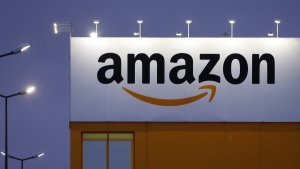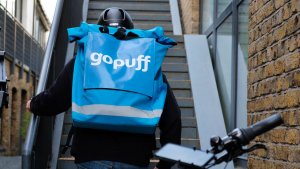For consumers, convenience is a major factor in buying decisions, but how far can retailers take it without infringing privacy?
Is Predictive Shopping The Next Big Thing In Retail?
For consumers, convenience is a major factor in buying decisions, but how far can retailers take it without infringing privacy?

Amidst the turmoil on the high street, retailers are starting to turn their attentions to AI and machine learning. Convenience is an increasingly important factor to 71% of UK shoppers, and AI and machine learning are slowly but surely enabling the next step – predictive shopping.
But before diving head-first into predictive shopping and shiny new tech, retailers need to assess and establish the customer benefits whilst considering the challenges they could meet on the journey to predictive shopping success.
Consumers are more strapped for time than ever before, meaning that the battle between brands and retailers to win their attention is increasingly competitive. Naturally, with this in mind, convenience is the most palpable benefit predictive shopping can bring.
The advantages of convenience in retailers’ offerings can be easily broken down into two broad areas: logistics and shopping experience.
For some categories, the success of the subscription model is an early stage version of predictive shopping. Just look at the prosperity of the Dollar Shave Club and Hello Fresh – they illustrate the natural evolution of predictive shopping.
With increasingly fast and sophisticated distribution models, we can expect to see more subscription-based solutions hitting the market. Consumer demand for this sort of model is growing, particularly for those products that have a regular consumption (and therefore purchase) frequency, which is unlikely to slow down now.
We may then see more direct to consumer businesses and this may, in turn, prompt a more formal multi-product subscription offering from retailers. A time will come when we won’t have to even think about replacing household products such as toilet paper, tissues and cleaning products, for example, as this will be taken care of by an automated process.
Additionally, ‘anticipatory shipping’ is a natural step from the next day delivery service we’re used to in the UK. A growing number of retailers are offering even faster options, such as ASOS’ same day and Amazon Prime Now’s 2hr delivery, further advancing the convenience customers increasingly demand and seek.
Unsurprisingly, Amazon are already exploring ‘anticipatory shipping’ with a service that is designed to send out products for select customers to a shipment hub before orders are placed in the pipeline. This would cut delivery times even further.
In this context, shopping experience largely hangs on the recommendations that retailers make based on customer data. For instance, many grocery retailers pre-populate a customer’s shopping basket based on previous orders and frequently purchased favourite items.
This is common practice and Amazon’s ‘Your recommendations’ is another good example. The e-commerce giant is now edging closer to true predictive shopping with services that reduce ordering friction, including ‘subscribe & save’, dash buttons and voice ordering via Alexa.
The use of augmented reality (AR) in fashion retail is also being increasingly used to create immersive shopping environments and boost customer convenience. For example, magic mirrors and smart walls are allowing shoppers to browse clothing collections digitally, to try items of clothing or make up on at the swipe of a finger, as well as to change the products’ colour, style and design.
We’re not too far from a future, where customers will have magic mirrors at home. Imagine them connecting personal data to services such as calendar, weather forecast and e-commerce services.
People will be able to shop for upcoming events like a holiday or a wedding they’d be attending, while receiving product suggestions carefully chosen to match customers’ individual tastes and preferences, from the comfort of their homes.
Also, a magic mirror could further predictive shopping by flagging that snow is forecast and identifying that the user hasn’t bought an appropriate pair of boots for a while. Based on this information, it could make a recommendation before customers have even thought about purchasing an item.
Wouldn’t that be convenient?
While true predictive shopping has many issues to overcome before it becomes a mainstream success, the key challenge will be data and trust. Particularly considering GDPR and the current data-sceptic atmosphere, as customer data will be difficult to consolidate.
Accurate data will be key to the success of predictive shopping but gathering it will be easier in some sectors than others. For example, easier returns systems might be one solution for a somewhat accurate, but not completely, predictive shopping system.
The wealth of data available in faster moving, consumable sectors, such as grocery, will likely put them at an advantage when considering predictive shopping in contrast to infrequently purchased, more involved categories, such as TVs.
Consumers’ needs are constantly changing, demanding more every day and developing dynamic expectations. What may be surprising and exciting today, will tomorrow be commonplace.
Predictive shopping is the next frontier in convenience, and Amazon is probably going to be at the forefront of delivering it. The real retail challenge will be to convince customers the benefits will outweigh what they might be giving up in privacy.
Chris Cooper is head of planning at smp.
Thanks for signing up to Minutehack alerts.
Brilliant editorials heading your way soon.
Okay, Thanks!

